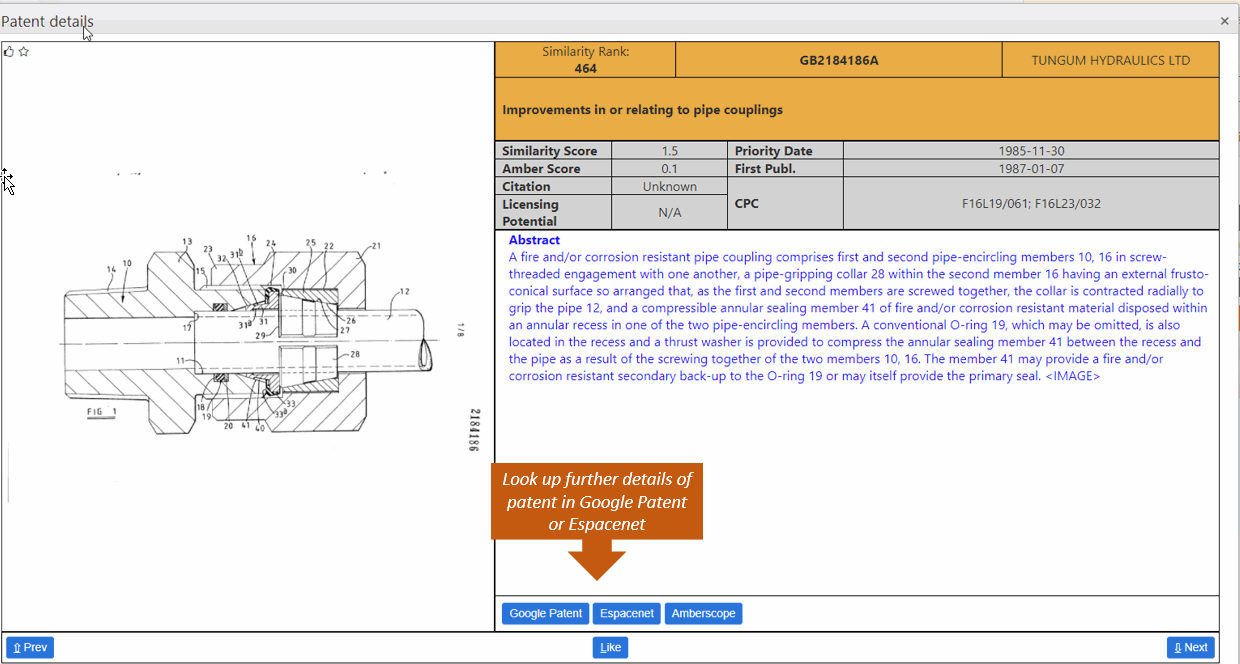Use Iterative Searching to quickly find patents
March 4th 2018
A challenging patent invalidation search
I had a search to do recently, on a granted patent which was only filed in Australia, and for an area with very imprecise technical terminology. Ambercite AI searching was an obvious answer, but by itself an Ambercite search on this patent number did not bring up an knock-out prior art patent.
Five known prior art documents were listed in these results, but almost by definition these did not disclose the invention. If they had, the patent would not have been granted.
So what to do? None of the indirect 'unknown' citations disclosed the invention either, but a number of these were pretty close - close enough to be used as additional query patents.
So, an "iterative search" was thought to be the best solution, particularly as a keyword based search for similar patent could have bought up thousands of patents to review.
How to do an iterative patent search in Ambercite
We started by adding the most relevant of these documents back into the Ambercite search box, as shown below (with different patent numbers to the search I did).
At this stage, I was not worrying about the priority or publication dates of the patents I was using as query patents. Obviously these dates are critical for the patents that are used to invalidate patents, but were not important at this stage.
I reviewed the results from the expanded query, and found a few more relevant but not knockout patents. I ended up with 11 such patents, all of them close - but not close enough.
Now came the serious search. I used these 11 query patents as a query in Ambercite Ai, and this time applied a date filter on the results. I did think about keyword filtering the results, but the terminology was all over the place, and I did not want to risk filtering out a relevant patent.
The patent I was trying to invalidate was a mechanical invention with a particular arrangement of features. A review of the images shown in Ambercite sufficed to review the patent in the majority of case, but if not, I could easily use the Google Patent or Espacenet lookup buttons to look up extra details, as shown in this example below (for a completely different UK patent).
And I am pleased to say that this search was successful. The knockout prior art patent I was looking for was a fair way down the list, but it did contain the combination of features I was looking for. Of note, it was a UK only patent that was published almost 20 years prior to the Australian patent I was trying to invalidate.
Also of note, when I then used the UK patent as the query patent in an Ambercite search, no other knockout patents came up. This really was a 'needle in a haystack' type exercise. Luckily, Ambercite can act as a very powerful 'magnet' when required.
This overall process is shown here. I am not suggesting that this is the perfect approach to every patent search, but this is an example of what is possible.
Why didn't the examiner find the UK prior art?
The focus of the UK patent was different to the Australian patent, and this was reflected in the different patent classification codes for the two patents. And as for the terminology, some of the key terms in the Australian patent were not found in the UK patent at all (as an example, my 'box' is your 'carton') or were only referred to briefly in a minor fashion.
For much the same reason, it would have been very unlikely that a semantic search engine would have found the UK patent either.
Conclusion
Along with the likes of Hybrid Searching, Iterative searching in Ambercite can be a very effective tool for finding the patents you are looking for.



